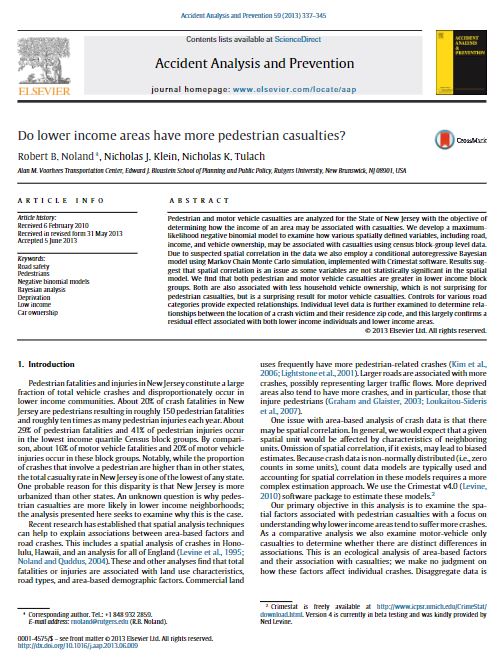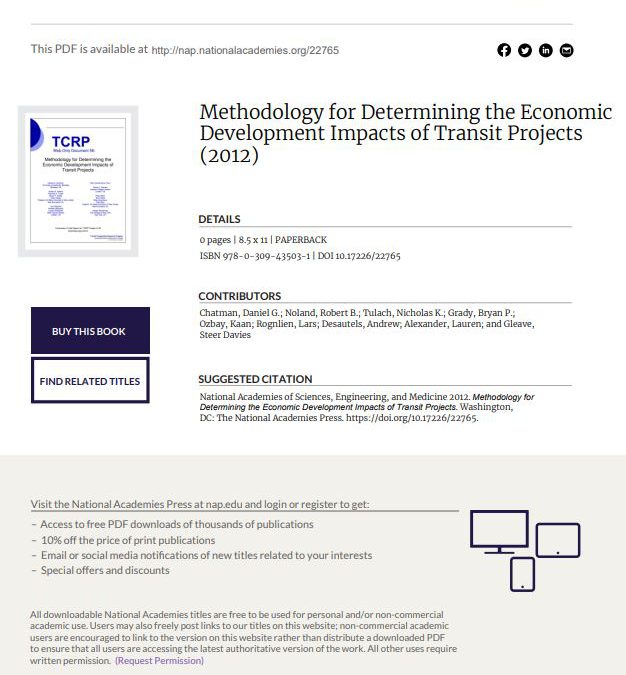Pedestrian and motor vehicle casualties are analyzed for the State of New Jersey with the objective of determining how the income of an area may be associated with casualties.


Pedestrian and motor vehicle casualties are analyzed for the State of New Jersey with the objective of determining how the income of an area may be associated with casualties.

TRB’s Transit Cooperative Research Program (TCRP) Web-Only Document 56: Methodology for Determining the Economic Development Impacts of Transit Projects explores development of a method for transit agencies to assess whether and under what circumstances transit investments have economic benefits that are in addition to land development stimulated by travel time savings.
Induced travel elasticities associated with new road capacity are typically estimated for roads of higher functional classifications, such as interstate freeways and principal arterials. These are estimated as “own” elasticities, that is an increase in lane kilometers...
There is a growing perception that e-scooters are more dangerous than bicycles and e-bikes, with towns implementing measures to ban their usage. Yet, there is not much evidence from large scale surveys to substantiate this claim. Nearly 14,000 micromobility injuries...
We compare charging station accessibility for different income groups in the San Francisco Bay Area. Using a microsimulation model, we estimate charging station accessibility under varying battery range scenarios, assuming different income groups have vehicles with...
The New Jersey Micromobility Guide serves as a resource for micromobility users across the state, collecting and summarizing the laws and safety best practices that can make riders safer. Micromobility, which includes e-bikes, e-scooters, and other low-speed devices,...